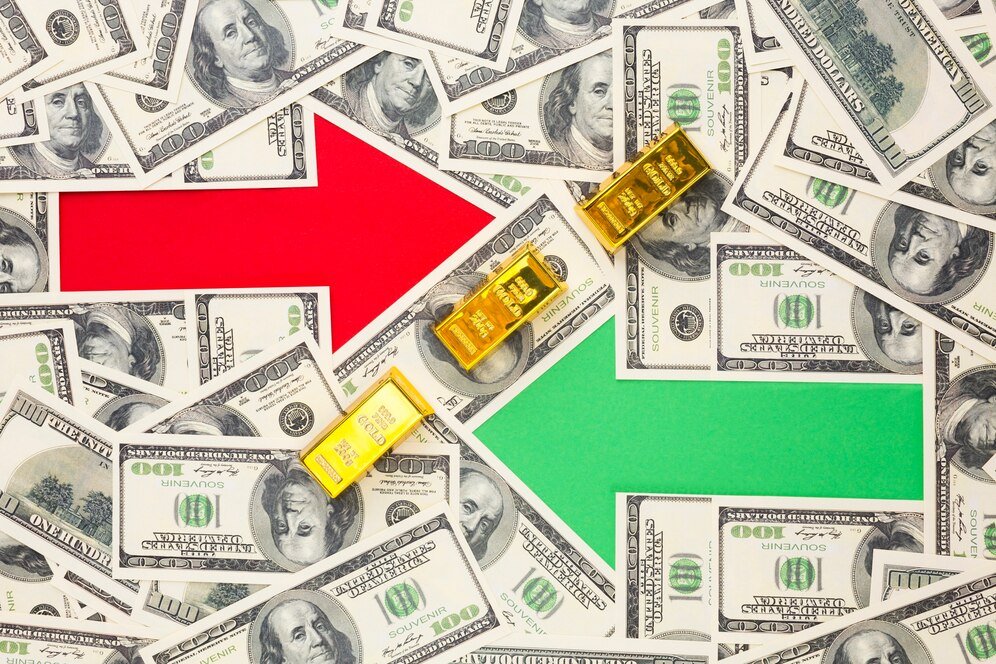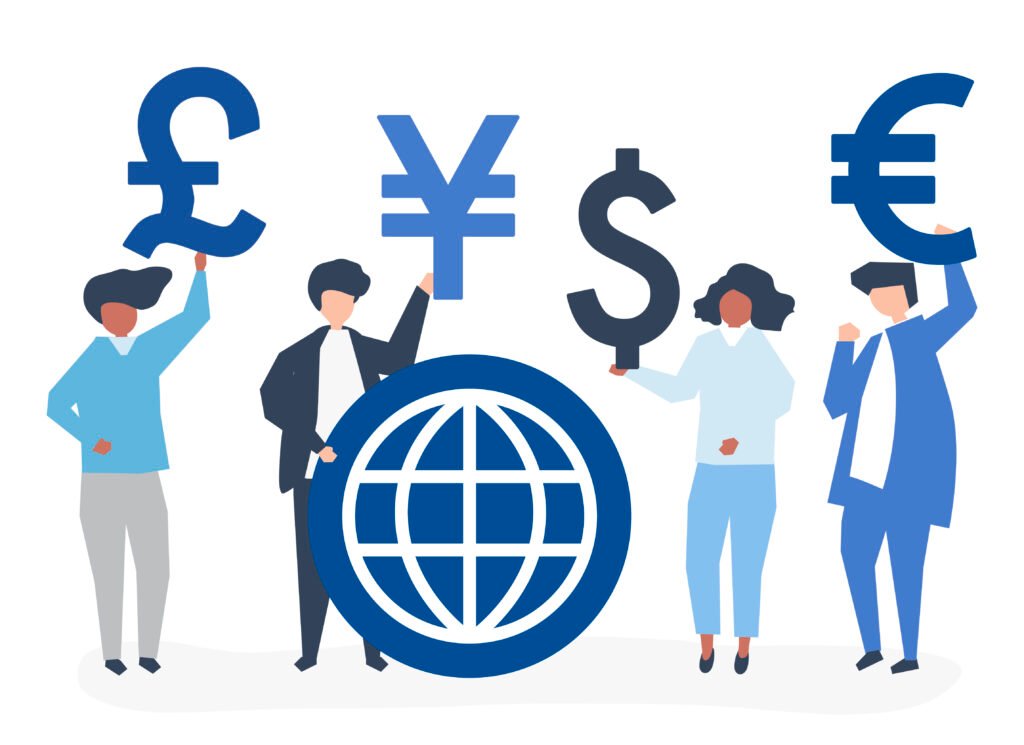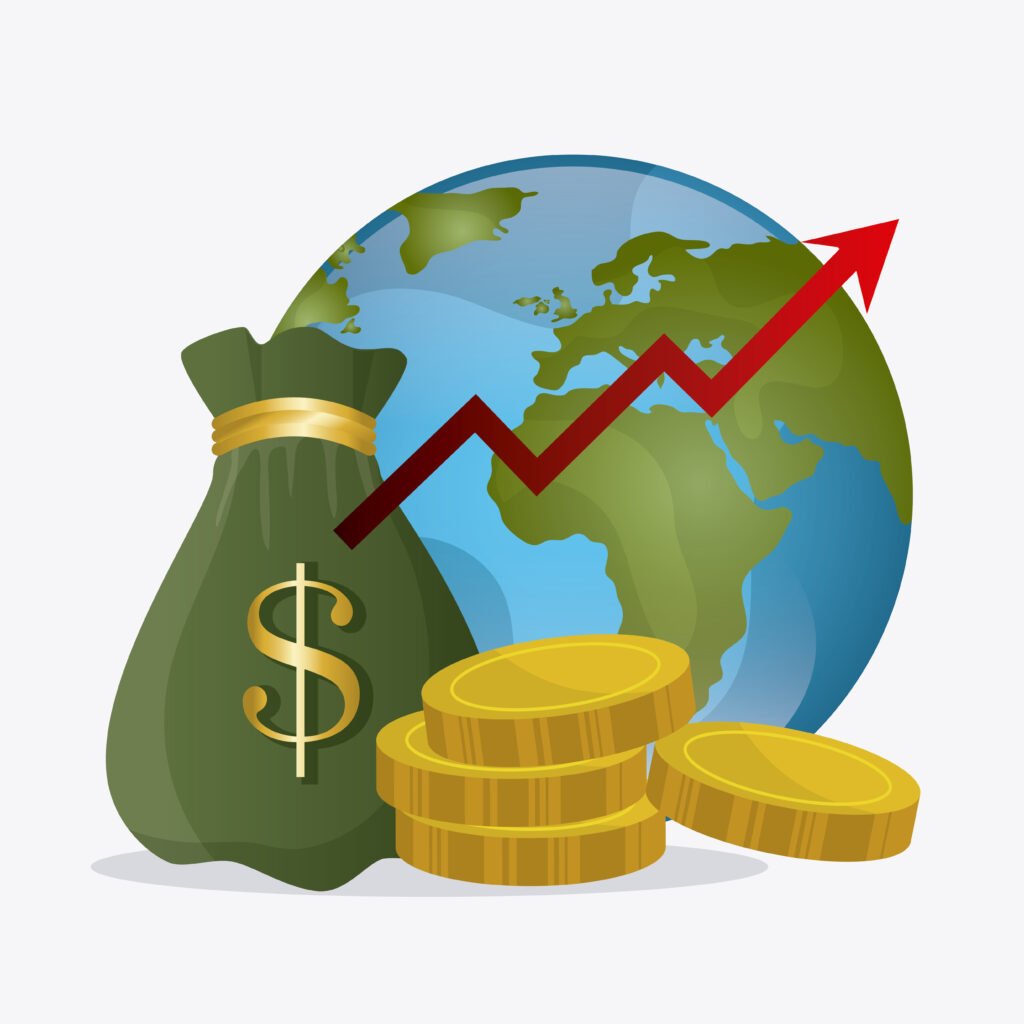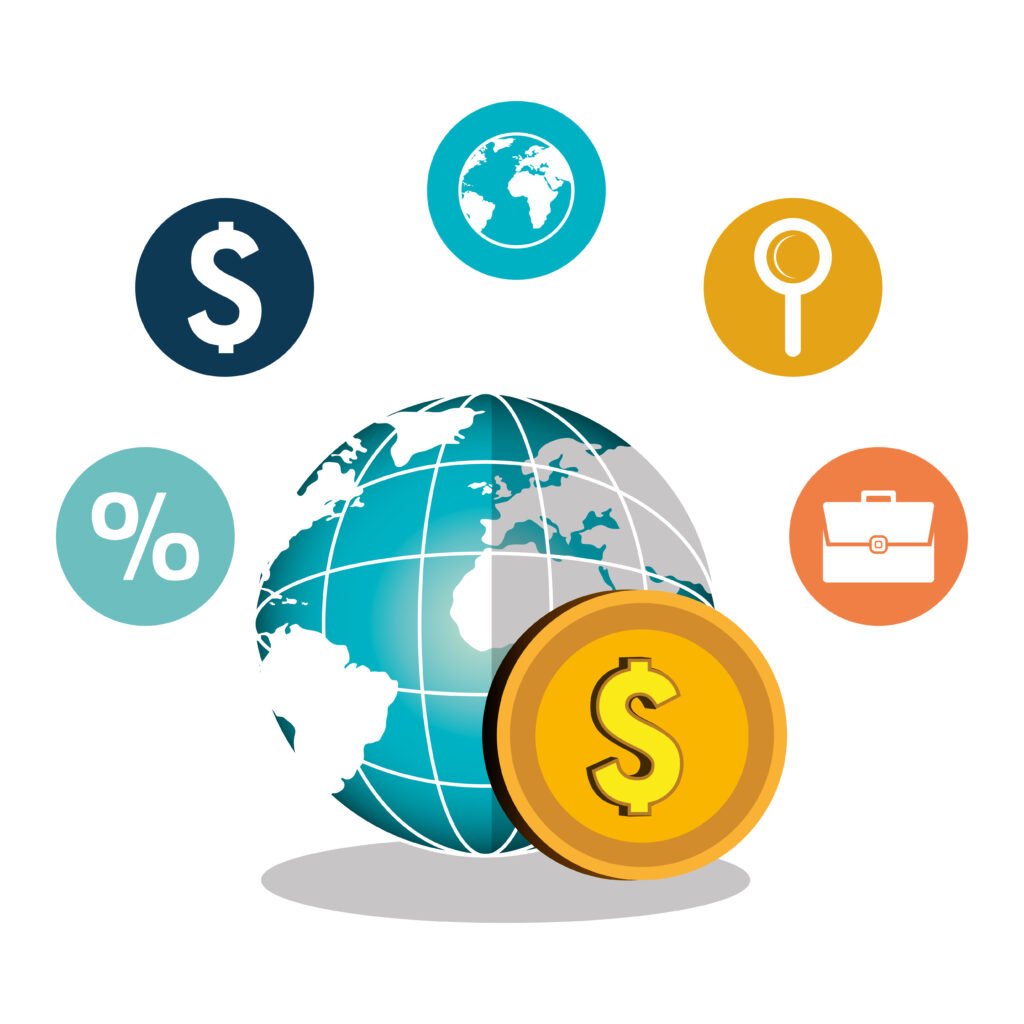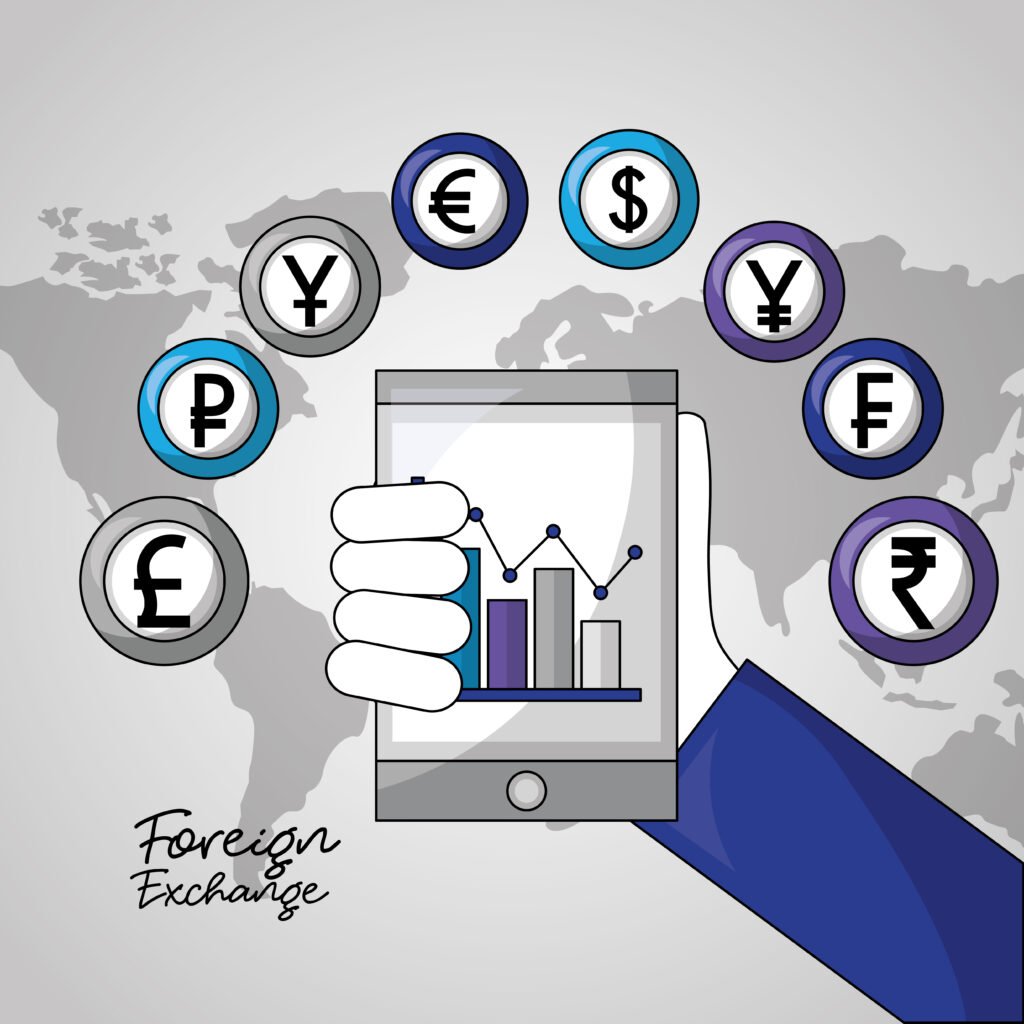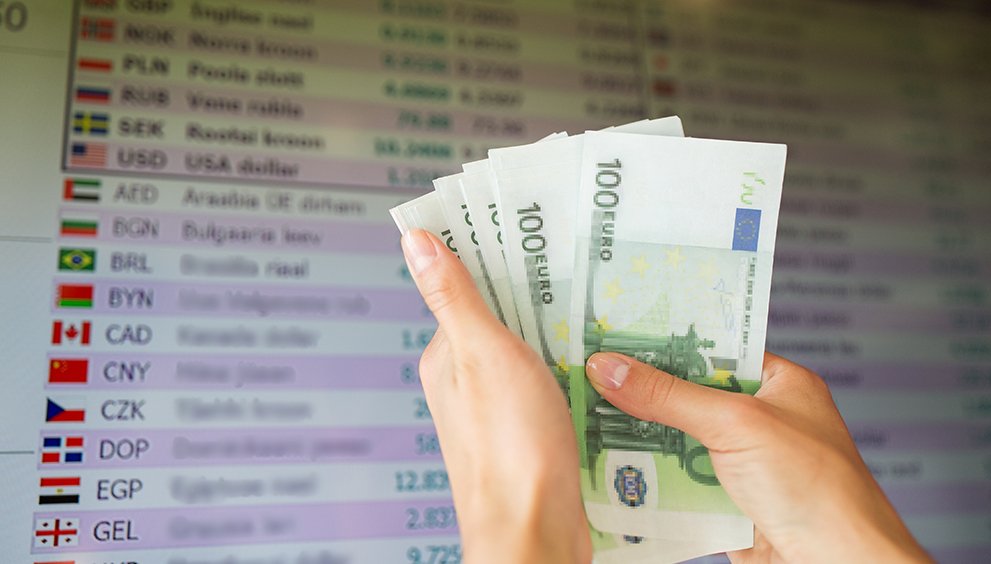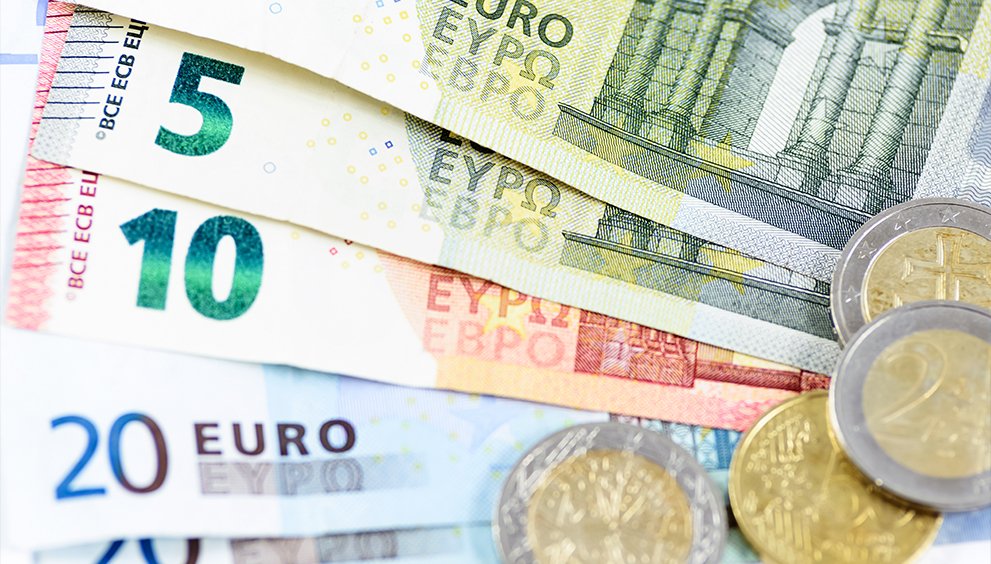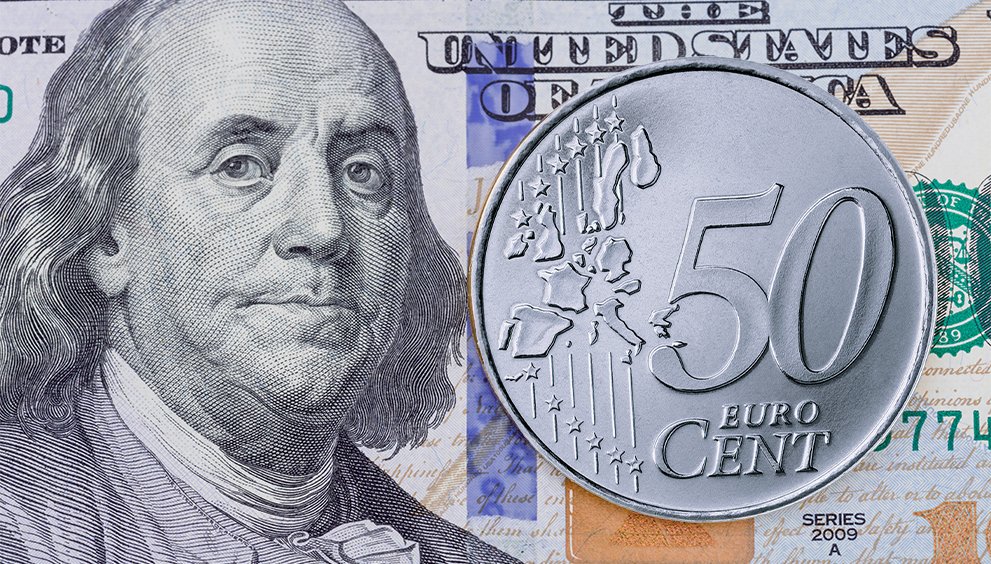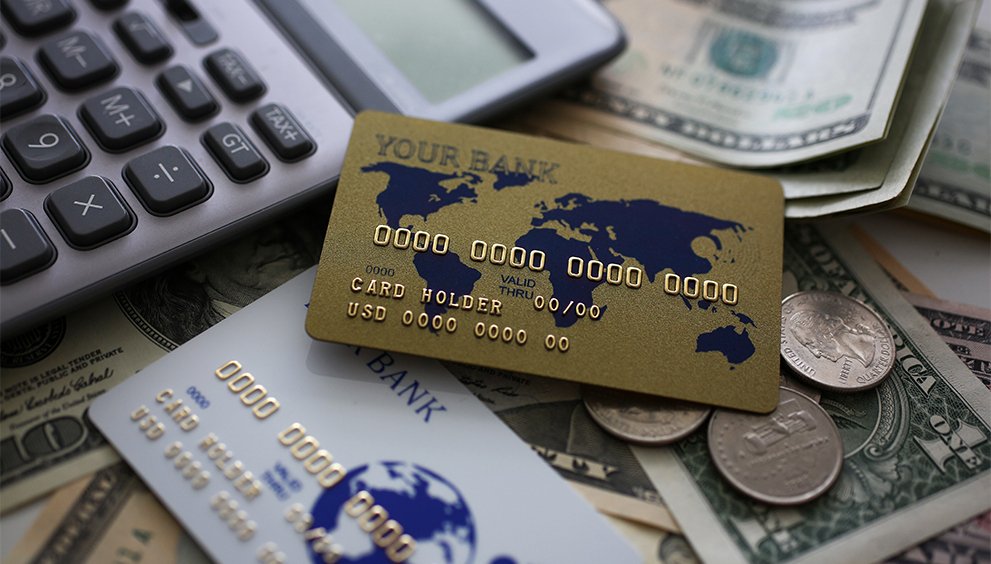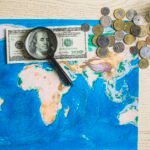How Do Trump’s Tariffs Affect Your Currency Exchange?

The recent headlines scream only one streak: “Trump’s reciprocal tariff rates!” While this may seem simple, it has sent the US dollar soaring to multi-decade highs and lows. Trade policies have always played a crucial role in shaping global economies, but few have had as much immediate and widespread impact as Donald Trump’s tariff strategies. It is much more than an economic regulation; it affects the roots of the economy, such as consumer prices and trade surpluses. Whether you’re a business owner managing international transactions, an investor navigating forex markets, or a traveller seeking the best exchange rate, understanding how tariffs influence currency movements is essential.
As Trump has officially returned to the White House, concerns about upcoming trade policies have taken a central stage in the foreign exchange market. But what does this mean for currency exchange? Let’s break it down.
The question is: What Are Trade Tariffs, and How Do They Affect the Economy?
Trade tariffs act as a control measure in international trade policy, enabling the government to regulate imports and exports. Trade policies encompass more than just economic consequences; they influence industries, consumer prices, and currency values. Another crucial aspect of trade policies is global trade relationships! Often, a change in trade policies can have a bitter effect on international economics. A fine example of this is Trump’s reciprocal policies, where he is determined to impose the same taxes that other countries levy on the USA.
What Are Trade Tariffs?
Simply put, a trade tariff is a tax imposed by a government on imported or exported goods. Tariffs often play an essential role in shaping trade dynamics. They help protect domestic industries and can even boost government revenue. By increasing the cost of foreign goods, tariffs ensure that locally produced items remain competitive and accessible to everyone.
Types of Trade Tariffs
- Ad Valorem Tariffs: These tariffs are a percentage-based tax applied to the total value of imported goods. For example, if a country applies a 10% ad valorem tariff on imported cars, this means that for every vehicle imported, an additional 10% of the car’s value will be charged as a tax. This type of tariff is often used because it adjusts with the value of the goods, making it more flexible in revenue generation.
- Specific Tariffs: Unlike ad valorem tariffs, which vary with the value of goods, specific tariffs impose a fixed fee per unit of imported goods. For example, a charge of £5 per barrel on imported oil. This type of tariff is straightforward to administer but does not account for changes in the value of the goods.
- Compound Tariffs: These tariffs combine valorem and specific tariffs, applying a percentage tax on the value of the goods and a fixed fee per unit. This approach can help governments balance revenue generation with protecting domestic industries.
- Protective Tariffs: The primary aim of protective tariffs is to shield domestic industries from competition posed by imports. By imposing higher tariffs on imported goods, governments can render foreign products less competitive in pricing, thereby encouraging consumers to purchase locally produced items. This can help to promote domestic manufacturing and safeguard local jobs.
- Revenue Tariffs: These tariffs are primarily implemented to generate revenue for the government. Unlike protective tariffs, which aim to protect local industries, revenue tariffs focus solely on raising funds, often contributing to the national budget. They can apply to a range of imported goods and are typically set at levels that ensure a consistent flow of income for the government.
How Trade Tariffs Affect the Economy
Governments implement tariffs for various reasons, from protecting local jobs to responding to trade imbalances or geopolitical conflicts. Here’s how it affects the economy:
-
Higher Prices for Consumers
One of the first and immediate effects of any shift in tariff policy is on the prices of imported goods. Importers, who fall into the trap of taxes over the purchase or sale of foreign products, often transfer this financial burden to consumers, making it expensive for the end users.
Example:
If a 25% tariff is placed on imported electronics, a laptop that previously cost £1,000 might now cost £1,250.
Impact:
There has been a significant increase in the costs of everyday products, including electronics, automobiles, and food items. Consequently, consumers are experiencing a reduction in their purchasing power. If tariffs impact a wide array of goods, it may lead to heightened inflationary pressures.
-
Protection for Domestic Industries
Tariffs act as protective tools for local industries to help ensure healthy or reduced competition from foreign imports. Tariffs or any other charges make imported goods more expensive, allowing domestic producers to gain a competitive edge.
Example:
If the UK imposes tariffs on imported steel, local steel manufacturers may see increased demand as foreign steel becomes more expensive.
Impact:
Job protection in domestic industries will occur as policies and measures are implemented to bolster local production and stimulate investment within the country, potentially leading to job creation and economic growth. Potential inefficiencies may arise if domestic companies don’t innovate due to a lack of competition. It also helps to ensure healthy competition; without the pressure to improve and adapt, these companies might struggle to keep up with international standards and the evolving needs of consumers.
-
Retaliation and Trade Wars
When a country imposes import tariffs, it aims to protect its industries or retaliate against unfair trade practices. Affected countries may respond with their tariffs, creating a cycle of trade barriers. This escalation can lead to a trade war, where nations continuously retaliate with rising tariffs, heightening tensions and disrupting global supply chains. Manufacturers may face higher costs for imported materials, increasing consumer prices and potential market losses.
Example:
If you have checked the recent headlines, Trump’s return to the White House has caused pivotal changes in global trade relations with the Reciprocal Tariffs approach. The statement continues the president’s tariff announcements, including a 10% tariff on Chinese imports effective last week and potential new tariffs on steel and aluminium from March. Trump has also threatened 25% levies on imports from Canada, and Mexico paused for a month for negotiations.
Impact:
Global trade disruptions refer to breakdowns or significant changes in countries’ exchanges of goods and services. They can arise from political conflicts, trade wars, natural disasters, or pandemics and lead to delays and shortages. Businesses relying on international supply chains face increased costs due to tariffs, transportation, and sourcing challenges. Higher expenses for materials or products may impact their pricing profitability. Market volatility affects firms as shifts in trade relationships and supply chain stability result in unpredictable price changes, demand, and investor confidence. This uncertainty complicates business planning and may lead to financial instability in organisations.
-
Impact on Business Costs and Supply Chains
Tariffs on imports can significantly raise operational costs for businesses reliant on foreign materials. This may force companies to increase prices, risking customer alienation and lower sales. Rising costs can also squeeze profits, limiting growth and innovation investments. In extreme cases, businesses might downsize, leading to layoffs and affecting local economies. While tariffs aim to protect domestic industries, they can pose complex challenges for those relying on a global supply chain.
Example:
A UK-based car manufacturer that imports steel from Europe may face higher costs if the government imposes a tariff on imported steel.
Impact:
Rising production costs significantly impact businesses. Companies may need to adjust their supply chains, shift towards domestic sourcing, or explore alternative markets to manage these costs. However, such transitions may create challenges, including potential job losses if firms cannot absorb higher expenses without reducing their workforce. These factors may lead to complex economic adjustments affecting companies and employees across various industries.
-
Currency Fluctuations
Tariffs can affect exchange rates by influencing trade balances and investor confidence. Countries with high tariffs may see their currency strengthen due to reduced imports or weaken if global investors see tariffs as harmful to economic growth.
Example:
If the US imposes tariffs on Chinese imports, fewer US dollars may be spent on Chinese goods, potentially strengthening the dollar. If tariffs disrupt the economy, investors may lose confidence, leading to a weaker currency.
Impact:
Fluctuating exchange rates impacting international trade and travel. Higher costs for businesses that rely on foreign transactions.
-
Government Revenue vs. Economic Growth
Tariffs, which are taxes on imports, can generate government revenue but have complex economic effects. They may finance public services, yet they can also raise prices for businesses and consumers, leading to reduced spending and slower growth. Retaliatory measures from other countries can exacerbate this slowdown. While tariffs offer immediate fiscal benefits, their long-term impacts may hinder growth if mismanaged.
Example:
The UK government collects billions annually from import tariffs, helping fund public services. However, if tariffs reduce trade and economic activity, tax revenue from other sources (such as income tax) may decline.
Impact:
Short-term revenue increases. Possible long-term economic slowdown if trade continues to decline.
Are Trade Tariffs Good or Bad?
The impact of trade tariffs can be unpretentious and often depends on various factors, including the perspective of different stakeholders, the intent behind tariff implementation, and the broader economic context. In essence, tariffs can create both winners and losers in the economy.
Who Benefits from Trade Tariffs?
- Domestic Industries: Tariffs are often levied to protect domestic industries from foreign competition. Local producers can gain a competitive edge by making imported goods more expensive, potentially leading to increased sales and market share. This protection can foster the growth of emerging industries and reduce dependency on foreign products.
- Government Revenue: Tariffs serve as a source of government revenue. The funds collected from tariffs can be used for public projects, infrastructure development, and social programs, contributing to overall economic stability.
- Workers in Protected Industries: Employees in industries shielded by tariffs may benefit from job preservation. By safeguarding jobs from foreign competition, tariffs can help maintain employment levels in specific sectors, supporting local economies and communities.
Who Suffers from Trade Tariffs?
- Consumers: One of the most direct consequences of tariffs is the increase in consumer prices. When tariffs are placed on imported goods, the costs are often passed on to consumers, leading to higher prices for products that may have previously been more affordable. This can disproportionately impact low- and middle-income families, who may find it harder to absorb these price increases.
- Exporters: Companies that rely on export markets may suffer due to retaliatory tariffs from other countries. When one nation imposes tariffs, it can provoke a tit-for-tat response from trade partners, leading to reduced market access and increased costs for companies looking to sell their goods abroad.
- Global Markets: Imposing tariffs can create instability in global markets. Trade tensions and disputes can lead to volatility, impacting investor confidence and causing fluctuations in currency values. Businesses may hesitate to make long-term investments in uncertain conditions, slowing overall economic growth.
In conclusion, tariffs can safeguard specific economic sectors but also affect consumers, exporters, and the global market. The debate regarding their effectiveness and consequences continues to evolve, reflecting the intricate relationship between protectionism and free trade.
How Trump’s Recent Tariff Moves Are Shaking Up Currency Exchange Rates in 2025
In early 2025, President Donald Trump’s administration rolled out a series of aggressive tariff policies targeting some of the United States’ largest trading partners—Canada, Mexico, and China. These measures, including 25% tariffs on most goods from Canada and Mexico and an additional 10% on Chinese imports (later escalated to 20%), have sent shockwaves through global markets. With the U.S. dollar at the center of the $7.5 trillion-a-day currency market, these tariffs are reshaping exchange rates, influencing inflation expectations, and altering the economic landscape both domestically and abroad. This article explores how Trump’s tariff moves are driving currency fluctuations, the mechanisms behind these shifts, and the broader implications for global trade and finance as of March 13, 2025.
The Tariff Landscape 2025: What’s Happening?
On February 1, 2025, Trump signed executive orders imposing 25% tariffs on imports from Canada and Mexico and a 10% tariff on goods from China, effective February 4. These actions were justified under the International Emergency Economic Powers Act (IEEPA), an unprecedented use of the law to enact broad trade barriers. The tariffs aimed to pressure Canada and Mexico into curbing illegal migration and drug trafficking, particularly fentanyl precursors, while punishing China for its role in the global supply chain of these chemicals. By March 4, the White House confirmed these tariffs were in effect, with China’s tariff rate rising to 20% shortly after. Retaliatory measures followed swiftly: Canada imposed 25% tariffs on $20.8 billion of U.S. exports, Mexico threatened tit-for-tat duties, and China added 10-15% tariffs on U.S. agricultural goods like soy and pork, effective March 10.
These moves mark a significant escalation from Trump’s first-term tariff policies, which targeted $380 billion in foreign goods. The 2025 tariffs cover over $1.4 trillion in imports, affecting more than 42% of U.S. trade volume. This scale, combined with the interconnectedness of North American supply chains and China’s global economic weight, has amplified its impact on currency markets.
How Tariffs Influence Exchange Rates
Tariffs disrupt the delicate balance of global trade, directly affecting demand for goods and, by extension, the currencies needed to purchase them. When the U.S. imposes tariffs, imported goods become more expensive for American consumers, reducing demand for those products and the currencies of the exporting countries. This typically strengthens the U.S. dollar as foreign currencies weaken. However, retaliatory tariffs on U.S. exports can counteract this effect by lowering demand for dollars abroad, creating a complex tug-of-war in the forex market.
The U.S. Dollar: A Double-Edged Sword
Since the tariff announcements, the U.S. dollar has experienced significant volatility. The Bloomberg Dollar Spot Index surged to a two-year high in early February as markets anticipated that tariffs would boost inflation and delay Federal Reserve rate cuts. By March 13, the dollar hit a 20-year peak against the Canadian dollar (nearing 1.45 CAD) and strengthened over 2% against the Mexican peso, which slumped to levels near 21 MXN per USD. Against China’s yuan, the dollar pushed the offshore rate to a record low of 7.3765 CNH, reflecting Beijing’s efforts to manage its currency’s decline.
This dollar strength stems from two key factors. First, tariffs act as a tax on imports, raising domestic prices and fueling inflation expectations. Higher inflation reduces the likelihood of Fed rate cuts, making U.S. assets more attractive to investors and increasing dollar demand. Second, the dollar’s safe-haven status draws capital during times of trade uncertainty, further bolstering its value. However, analysts warn that prolonged trade tensions could weaken the dollar if economic growth falters due to supply chain disruptions and reduced exports.
Canadian Dollar and Mexican Peso: Under Pressure
The Canadian dollar (CAD) and Mexican peso (MXN) have borne the brunt of Trump’s tariffs, given their economies’ heavy reliance on U.S. trade. Canada sends nearly 80% of its exports to the U.S., while Mexico’s figure is similarly high. The 25% tariffs threaten to disrupt integrated supply chains—particularly in autos, where parts cross borders multiple times—raising costs and reducing competitiveness. Since February, the CAD has weakened to its lowest level in over 20 years, with forecasts suggesting it could slide to 1.50 if trade talks falter. The peso, already down 16% against the dollar in 2024, has faced additional volatility, with a 2% rebound on news of potential exemptions quickly erased by renewed uncertainty.
Both countries’ central banks face tough choices. The Bank of Canada may cut rates aggressively—potentially to 2.4% by year-end—to offset economic slowdown, further pressuring the CAD. Mexico, constrained by domestic political challenges and cartel influence, may see the peso depreciate further, with JPMorgan estimating a near-12% drop if tariffs persist.
Chinese Yuan: A Strategic Devaluation?
China’s response to the 20% tariff hike has been more nuanced. The yuan weakened significantly, but Beijing has a playbook from Trump’s first term: currency devaluation. By allowing the yuan to slide, China offsets tariff costs, keeping its exports competitive. Since February, the People’s Bank of China has tolerated a gradual decline, with Barclays projecting a year-end rate of 7.5 CNY per USD and a worst-case scenario of 8.4 under escalated tariffs. This controlled weakening avoids a sharp plunge that could trigger capital outflows, a risk China faced during the 2018-2019 trade war. However, a weaker yuan exacerbates pressure on other Asian currencies and complicates Europe’s economic outlook, given its trade ties with China.
The Euro and Beyond
The euro (EUR) has not been immune, sliding over 1% to a two-year low against the dollar as tariffs ripple through global markets. With the U.S. as the EU’s top trading partner ($1.7 trillion in two-way trade), potential tariffs on European goods (proposed at 25%) loom large. European Central Bank policymaker Klaas Knot warned on March 9 that U.S. tariffs could raise American inflation and interest rates, further weakening the euro. ING forecasts suggest the euro could hit parity ($1.00) if trade tensions escalate, driven by a sluggish EU economy and anticipated ECB rate cuts of 100 basis points in 2025. Emerging market currencies, already vulnerable to risk aversion, face additional strain. A stronger dollar increases debt burdens for countries borrowing in USD, potentially sparking financial instability—a risk highlighted by macroeconomic models predicting that a 50% tariff could massively appreciate the dollar.
The Broader Economic Context
Trump’s tariffs are not just about trade—they’re a geopolitical tool. By targeting Canada and Mexico over migration and drugs and China over fentanyl and economic rivalry, the administration seeks to rebalance relationships it deems unfair. Trump has claimed these measures will raise trillions in revenue, a point contested by economists who argue that tariffs on a $3.1 trillion import base cannot replace the $2 trillion from income taxes without implausible rate hikes.
The economic fallout is already visible. The Tax Foundation estimates that tariffs on Canada and Mexico will cost U.S. households $309 and $435 annually, respectively, while Chinese tariffs add $329 per household. Retaliation amplifies the pain: China’s agricultural tariffs hit U.S. farmers while Canada’s duties threaten energy and manufacturing exports. Supply chain chaos, particularly in North America’s auto sector, could add $3,000 to the price of a car, according to PBS projections.
Inflation is a wildcard. Goldman Sachs predicts a 0.7% rise in core inflation from Canada- Mexico tariffs alone, with broader estimates suggesting a 1-2% hit to S&P 500 earnings per 5% tariff increase. The Fed, pausing rate cuts in February, is “waiting to see what policies are enacted,” per Chair Jerome Powell, leaving markets guessing whether growth or inflation will dominate its next move.
Long-Term Implications for Dollar Dominance
While the dollar has surged in the short term, its long-term dominance is under scrutiny. Trump’s threat of 100% tariffs on BRICS nations (Brazil, Russia, India, China, South Africa) if they pursue a rival currency signals a defensive stance. A stronger dollar might deter such efforts, but sustained trade wars could accelerate de-dollarization as countries seek alternatives. Posts on X suggest capital may flow into Bitcoin as confidence in fiat erodes, though this remains speculative as of March 13.
Trump’s 2025 tariff moves have thrust currency exchange rates into flux, with the U.S. dollar riding high on safe-haven flows and inflation bets, while the Canadian dollar, Mexican peso, and Chinese yuan reel under pressure. The euro and emerging markets face collateral damage, and retaliatory tariffs ensure no one escapes unscathed. As negotiations unfold—automakers secured a one-month exemption in February, and agricultural relief is rumoured—the situation remains fluid. For now, the $7.5 trillion currency market is a battleground, reflecting the tension between Trump’s protectionist gamble and the global economy’s interconnected reality. Whether this strengthens or undermines the dollar’s reign will depend on how long the trade war lasts and how deftly the world adapts.
Impact on Businesses and International Payments
Businesses that rely on international trade will feel the impact of currency fluctuations in various ways:
- Higher import/export costs: If you import goods from tariff-affected countries, fluctuating exchange rates could make your purchases more expensive.
- Supply chain disruptions: Tariffs could lead to supplier changes, impacting payment terms and transaction costs.
- Hedging strategies needed: Businesses dealing with foreign currencies may need to hedge their currency exposure to minimise risks.
How to Protect Your Business:
- Use forward contracts to lock in exchange rates for future payments.
- Diversify suppliers to avoid over-reliance on tariff-affected countries.
- Monitor exchange rates to time transactions effectively.
Impact on Travellers and Expats
Travellers and expatriates will also experience changes in their currency exchange due to tariffs:
- Higher costs when exchanging into USD: If tariffs strengthen the dollar, travellers may need to spend more of their home currency to get the same amount in dollars.
- Better deals for those holding weaker currencies: If tariffs weaken the euro or yuan, travellers exchanging USD or GBP may get more local currency when travelling to those regions.
Example:
If you’re planning a trip to Europe and tariffs cause the euro to weaken, you might find that your dollar or pound stretches further when booking hotels or paying for meals.
How to Minimise Travel Costs:
- Use multi-currency travel cards to lock in favorable exchange rates.
- Exchange currency in advance if you anticipate major fluctuations.
- Consider alternative destinations where your currency has more purchasing power.
Potential Central Bank and Government Responses
Governments and central banks often step in when tariffs create economic instability. Possible responses include:
- Interest rate adjustments: The Federal Reserve or European Central Bank may alter interest rates to counteract tariff effects.
- Currency intervention: Some countries may buy or sell large amounts of currency to stabilise their exchange rate.
- Trade negotiations: Tariff disputes often lead to new agreements that can reverse currency trends.
What This Means for You:
- If central banks cut interest rates, affected currencies could weaken further.
- If trade deals are reached, currency values could stabilise, reducing uncertainty.
Final Thoughts
Trump’s tariff policies have the potential to reshape global trade and impact currency exchange rates in significant ways. Whether it’s a stronger US dollar, weaker foreign currencies, or increased market volatility, these shifts can influence the cost of international transactions, travel, and investment.
By staying informed and using strategic financial tools, you can navigate currency fluctuations effectively and make the most of your money—whether you’re traveling abroad, running a business, or simply exchanging currency.
Would you like personalised insights on protecting your international payments from currency risks? Get in touch with a forex specialist today!


 English
English 
















